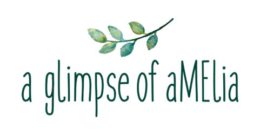Dermaveen Soap Free Wash
TUESDAY REVIEW
Dermaveen soap free
Aqua = Water, a solvent for ingredients that do not like to dissolve in oils but rather in water. Usually number one on the ingredients list, it makes up the majority of the product. The water used in cosmetics is purified and deionized (which means that almost all of the mineral ions inside it are removed). This way, the products can stay more stable over time.
Glycerin = By product of soap manufacture, Glycerol. May be animal-derived or palm oil-derived. Safe for most people. Not assessed for safety in cosmetics as per CIR. Some animal studies have shown adverse effects. Best avoided if vegan. Acts as a solvent to dissolve other ingredients in the formulation. It is a colourless, odourless, viscous liquid that is sweet-tasting and non-toxic. Used to promote skin smoothness and moisture content. It is a humectant
*Cocamidopropyl Betaine = Compounds derived from coconut oil and dimethylaminopropylamine. Used as a surfactant – to help clean and create a lather. Effects on the immune system, safe in wash-off products. Allergic reactions may cause sensitisation.
*Decyl Glucoside = Safe and/or beneficial. Decyl glucoside is a mild non-ionic surfactant used in cosmetic formularies including baby shampoo and in products for individuals with sensitive skin. Many natural personal care companies use this cleanser because it is plant-derived, biodegradable, and gentle.
*Disodium Cocoamphodiacetate = A synthetic surfactant. Great foaming ability, non-irritating derived from coconut.
*Triethanolamine= Best avoided, petroleum-derived, irritant for asthma, contact dermatitis, eczema, hives, itching, rash. A thickener and wetting agent, TEA allows water to flow more freely by reducing the surface tension that holds droplets together.
Sodium PCA= Sodium PCA is a naturally occurring humectant that functions as a hydrating agent and a skin-replenishing ingredient. Synthetic, safe for most people. Those sensitive to MSG may wish to avoid it.
*Avena Sativa (Colloidal Oatmeal) Kernel Flour = Used for its anti-inflammatory, moisturising and soothing properties on the skin. May ease a variety of skin conditions including eczema, psoriasis, acne and dry, itchy skin. I would prefer this ingredient to be organic as oats are such a heavily sprayed crop. Rich in skin-identical lipids, powerful anti-oxidants, skin-active ceramides and membrane phospholipids, it is an excellent addition to cosmetic formulations to provide reparative and protective properties. It has a high linoleic acid content recognised for establishing and maintaining the epidermal water barrier thereby improving skin barrier function. Rated a low 1 by the EWG.
*Phenoxyethanol= It’s pretty much the current rage preservative. It’s not something new. It was introduced around 1950 and today it can be used in up to 1% of cosmetics worldwide and be The issue is It can be found in nature such as in green tea, but nowadays the version used in cosmetics is synthetic and this is where the problem lies. The synthetic version can irritate the skin, eyes or lungs. It is absorbed by the skin. Effects from exposure can include eye irritation, headaches, tremors and central nervous system depression. The synthetic version is petroleum-derived and it is best avoided. It is sticky and needs to be used within concentration limitations. It is completely restricted in Japan. 1% concentration limits apply otherwise. Often listed last on a cosmetic due to its small concentration amount.
*Sorbic Acid = Sorbic acid is a naturally occurring preservative. It’s highly effective at inhibiting the growth of mould. Sorbic acid kills microorganisms or it can prevent or retard their growth and reproduction, protecting cosmetics and personal care products from spoilage.
*Caprylyl Glycol = Synthetic or plant-derived, not assessed for safety by CIR. An alcohol derived from a fatty acid, caprylyl glycol is a humectant, a hydrating ingredient that works by attracting water to and holding it in the skin/hair.
Firstly, soaps have very poor solubility, so you’ll almost always find them in solid bar form. The first trick is to pick out the prefix (sodium or potassium) and the suffix (-ate). Soaps are named based on the oil or fat they’re made from, so olive oil, once it’s treated with sodium hydroxide, becomes sodium olivate. Tallow becomes sodium Tallowate. Coconut oil becomes sodium cocoate.
Some recommendations for gentle body wash, in no particular order:
@Fourcowfarm baby wash
@chrubub baby wash
@Ecotanbodywash Body wash
@Drbronner baby unscented or scented
@drolanet unscented or scented
@Thebasecollective Magnesium and white tea body wash
@Mukti body wash
@Byronbayskincare at body wash
@100% pure coconut shower gel
@Endota Organics Nurture Gentle Bath & Body Wash

